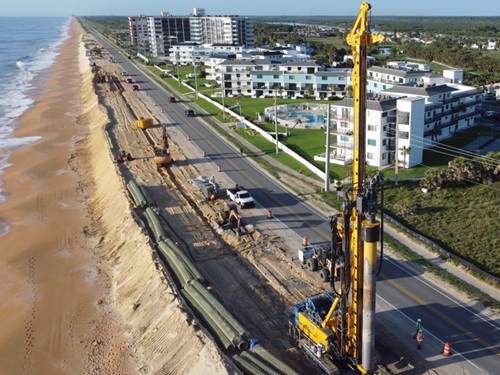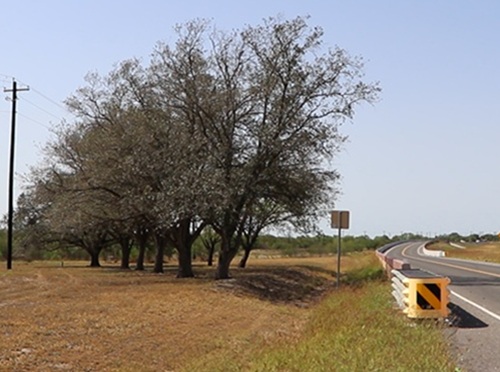The North Carolina Department of Transportation plans to mine three million cubic yards of rock from a 33-acre site in the Pisgah National Forest to help rebuild parts of I-40 that collapsed and washed away in the wake of Hurricane Helene in September 2024.
[Above photo by NCDOT]
By using materials close to the construction site, NCDOT said in a statement it can rebuild the interstate faster, cheaper, and safer while protecting the adjacent forest and wildlife. This plan also will put less construction traffic on I-40, which is reduced to one lane in the eastbound lanes for a seven-mile section and a five-mile section of I-40. Five miles of one-way traffic also are in effect on I-40 in Tennessee, up to the state line, because of hurricane damage.
To get permission to remove rocks from the national forest, NCDOT partnered with several government agencies – including the U.S. Forest Service (USFS), which gave the transportation agency a special use permit to test potential sites for suitability. The USFS then granted a temporary land transfer to the Federal Highway Administration, which gave NCDOT a temporary easement to remove rocks from the forest.
Other agencies coordinating on reconstruction of I-40 include the U.S. Army Corps of Engineers, U.S. Fish and Wildlife Service, North Carolina Division of Water Resources and North Carolina Wildlife Resources Commission.
NCDOT also has identified an adjacent 11.5-acre site designated as a holding area for overburden material – anything that was taken from the larger site but not needed for construction. When the interstate construction is completed, crews will use the overburden material to restore the forest areas that had been disturbed.
Besides the logistical and bureaucratic considerations, NCDOT and its state and federal partners are taking several extra measures to make minimal impacts to the forest, its abundant wildlife, and habitat.
“Our agencies’ collective experts reviewed numerous data sources and performed field reviews for a wide variety of resources,” said David Uchiyama, western communications manager for NCDOT. “We have accounted for nearby streams, wetlands, protected plants, terrestrial species, aquatic habitat, geology, archaeological remains, historic resources, recreational use, property owners, access constraints, and hydroelectric energy generation facilities, amongst other things. We diligently worked to avoid particularly sensitive resources such as old growth forest, higher quality stream valleys, and avian nesting areas.”
NCDOT also is developing a long-term environmental plan with FHWA, the USFS, and other agencies to restore the forest and to improve the wildlife habitat, Uchiyama noted. The 500,000-acre forest features hardwood and old-growth trees, waterfalls, miles of hiking trails, and is home to black bears, white-tailed deer, bobcats, squirrels, and numerous bird species.
“We are working closely with stakeholders to navigate a variety of mitigative opportunities in the forest,” Uchiyama added. “This is an ongoing coordination effort that we want to resolve quickly so that all parties have assurances of their respective responsibilities, costs, and benefits.”
Between the forest and the interstate lies the Pigeon River, which provides more challenges. To give geotechnical crews access to the base of the interstate to gather data to design retaining walls, NCDOT is building a causeway along the river, will allow the contractor to safely build the retaining walls without additional lane closures on I-40.
Later this summer, NCDOT will build a bridge over the river so crews can begin extracting the rocks for road construction.




